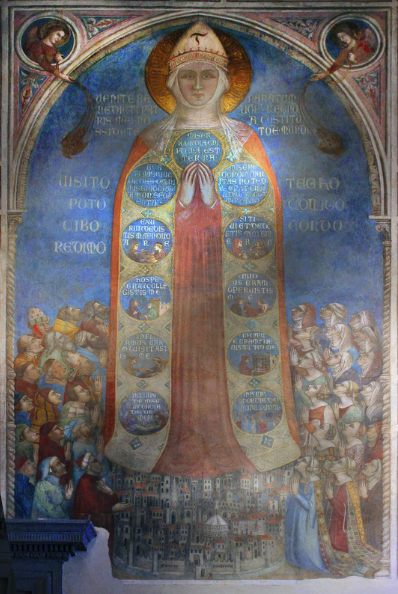Florentine Topographies: The Buildings, Spaces, and People of the Renaissance City
@ Newberry Library
60 W Walton St, Chicago, IL 60610
Opening Tuesday, November 8th, from 6PM - 7PM
Presented by prof. Niall Atkinson
This lecture will trace the spatial and social dimensions of the urban development of the city of Florence from the late Middle Ages until the time of Botticelli at the turn of the sixteenth century. In this period Florence emerged as one of the most dynamic economies as well as one of the most innovative centers of cultural and scientific innovation in pre-modern Europe. Through a series of case studies this lecture will investigate the underpinnings of these developments and innovations through an exploration of key monuments of the built environment that led to the formation of the city that Botticelli called home. This lecture is sponsored by Chicago Map Society.
Register to attend in-person
Register, online webinar
Niall Atkinson is Associate Professor of Art History and Romance Languages and Literature at the University of Chicago. His research focuses on the experience of architecture and urban space in early modern Italy in order to understand the built environment as a collective social construction of the body’s sensorial apparatus. His recent work has explored the relationship between sound, space, and architecture and their role in the construction of civic society, culminating in the publication of The Noisy Renaissance: sound, architecture, and Florentine urban life (Penn State, 2016). He is currently co-writing a book on the urban visual and spatial effects of the narratives and itineraries of French travelers to early modern Rome (with Susanna Caviglia, Duke University). He is also experimenting with digital technologies to spatialize the demographic data contained in the 1427 tax census of Florence (catasto) into an interactive geographic platform. In collaboration with a consortium of related digital reconstruction projects focused on Renaissance Florence (Florentia Illustrata), this method of geo-referenced spatial history will lay the groundwork for future experiments in mapping the soundscapes and other sensory experiences of early modern cities. Future projects include the role of city descriptions in mediating cultural exchange in early modern Mediterranean travel accounts, as well as an ongoing interdisciplinary collaborative project exploring the cultural interactions of the Indian Ocean (“Interwoven: Sonic, visual and textual histories of the Indian Ocean world”). In 2018, he co-curated the US Pavilion at the Venice Architecture Biennale on the theme, “Dimensions of Citizenship.”
The lecture series “Quattrocento Florence: the City and its Artists” is co-sponsored by the Italian Cultural Institute of Chicago and the Newberry Library’s Center for Renaissance Studies and complements the Minneapolis Institute of Art exhibition “Botticelli and Renaissance Florence: Masterworks from the Uffizi.” Four art historians explore urbanism and the production of art in fifteenth-century Florence through close analysis of works in the MIA exhibition.
The exhibition “Botticelli and Renaissance Florence: Masterworks from the Uffizi” is open at the Minneapolis Institute of Art from October 16, 2022 through January 8, 2023. For more information, visit artsmia.org
Official Website
More events on this date
Tags: Chicago, Florentine Topographies: The Buildings Spaces and People of the Renaissance City, Near North Side, Newberry Library, Niall Atkinson

« previous event
next event »